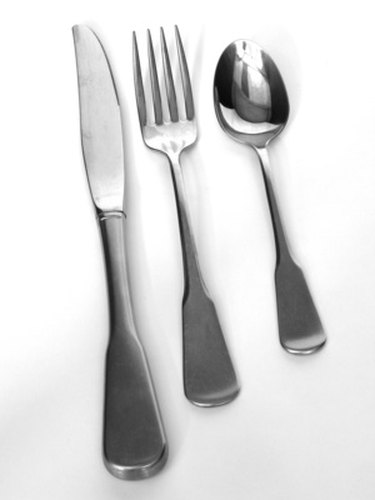
Flatware is a generic term applied to the knives, forks spoons and other utensils people use to serve and eat food. Silver-plated flatware is made of a base metal like stainless steel, brass or copper that has been electroplated with silver. The plating is thinner than a human hair. Silver-plated flatware first appeared in the mid-19th century as manufacturers sought to expand their market by offering a low-priced alternative to pure sterling silverware.
Flatware Value
Video of the Day
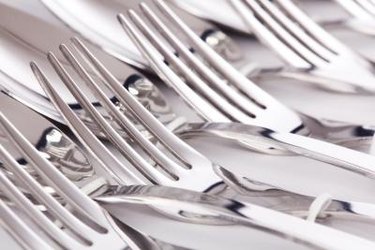
Silver-plated flatware, unlike sterling silver, has no intrinsic value. However, it does have some market value to flatware collectors, as long as the silver plating hasn’t worn through, and to people who seek to fill out incomplete flatware sets. According to the Silver Season website, more than 2,000 different silver-plated flatware patterns were produced from the 1850s to the 1950s, on more than 200 different types of eating and serving utensils. Certain makers’ marks denote better quality, including Gorham, Towle, Oneida Community and 1847 Rogers Bros.
Video of the Day
Tarnish and Corrosion

Silver-plated flatware is subject to black tarnish from atmospheric sulfur compounds. Silver plate stored in damp conditions will develop crusty green deposits from corrosion between the silver and the base metal. The Society of American Silversmiths advises that the best way to preserve your silver plate is to prevent tarnish and corrosion.
Silver Plated Flatware Care
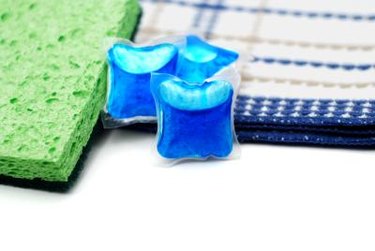
Silver-plated flatware should be washed by hand with a non-lemon-scented, phosphate-free dish detergent and dried immediately with a soft dish towel. Never wash silver-plated flatware in a dishwasher, according to the Society of American Silversmiths, because the high heat and harsh detergents can damage the thin plating and loosen knife handles or non-metal components of the flatware. Also, pepper and salt corrode silver plating, so shakers should be emptied, washed and dried before storing.
Storing Silver Plated Flatware
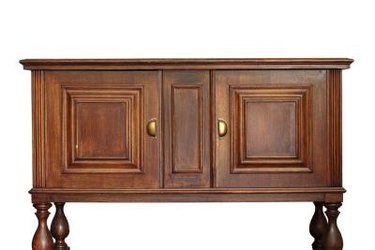
Silver-plated flatware should be stored in a tight-fitting chest, closed display case or polyethylene bag with commercial anti-tarnish strips and silica gel drying agent. You also can use silver-impregnated anti-tarnish cloth to wrap your silver plate for storage. Never use newspaper, rubber bands, plastic food wrap or cardboard boxes for silver storage as these can aggressively tarnish or corrode silver plate according to the Society of Silversmiths website.
Cleaning Silver Plate
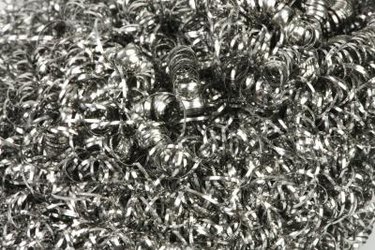
Eventually, your silver plated flatware will tarnish. You can remove light tarnish with a commercial silver cleaner, while heavier tarnish may require a commercial silver polish or silver dip. Follow product directions, being careful not to polish through the silver plate to the base metal beneath, advises the Society of Silversmiths. After cleaning, rinse the silverware in warm water and dry it. Bring out the silver sheen by buffing the pieces with a commercial rouge cloth.